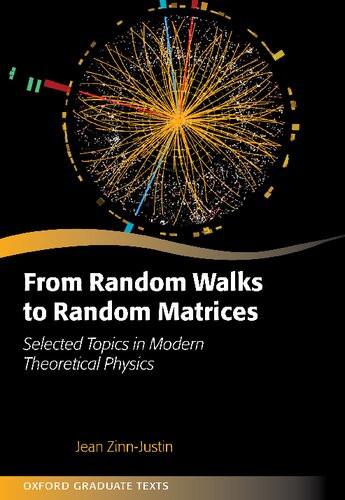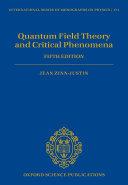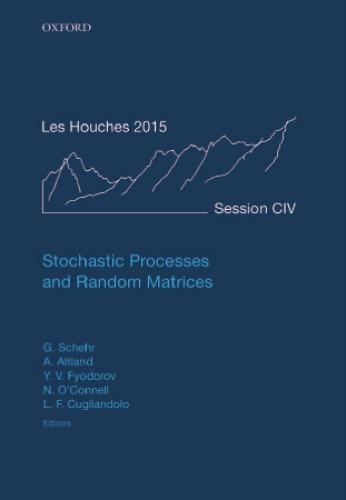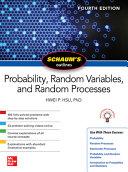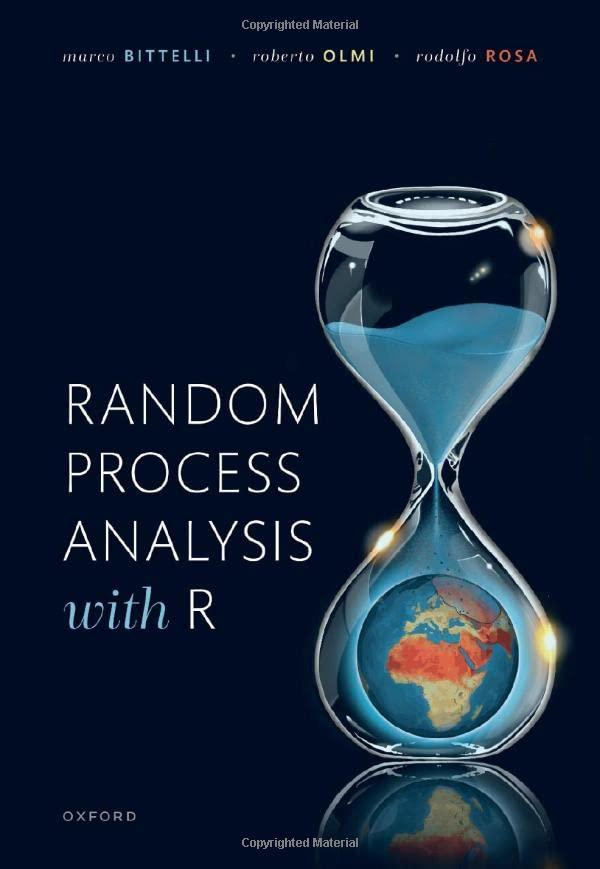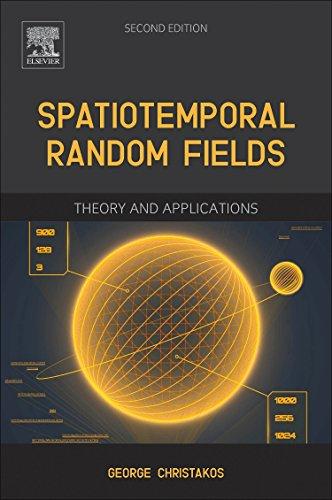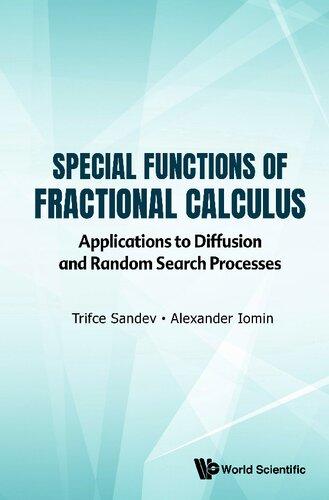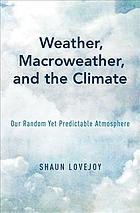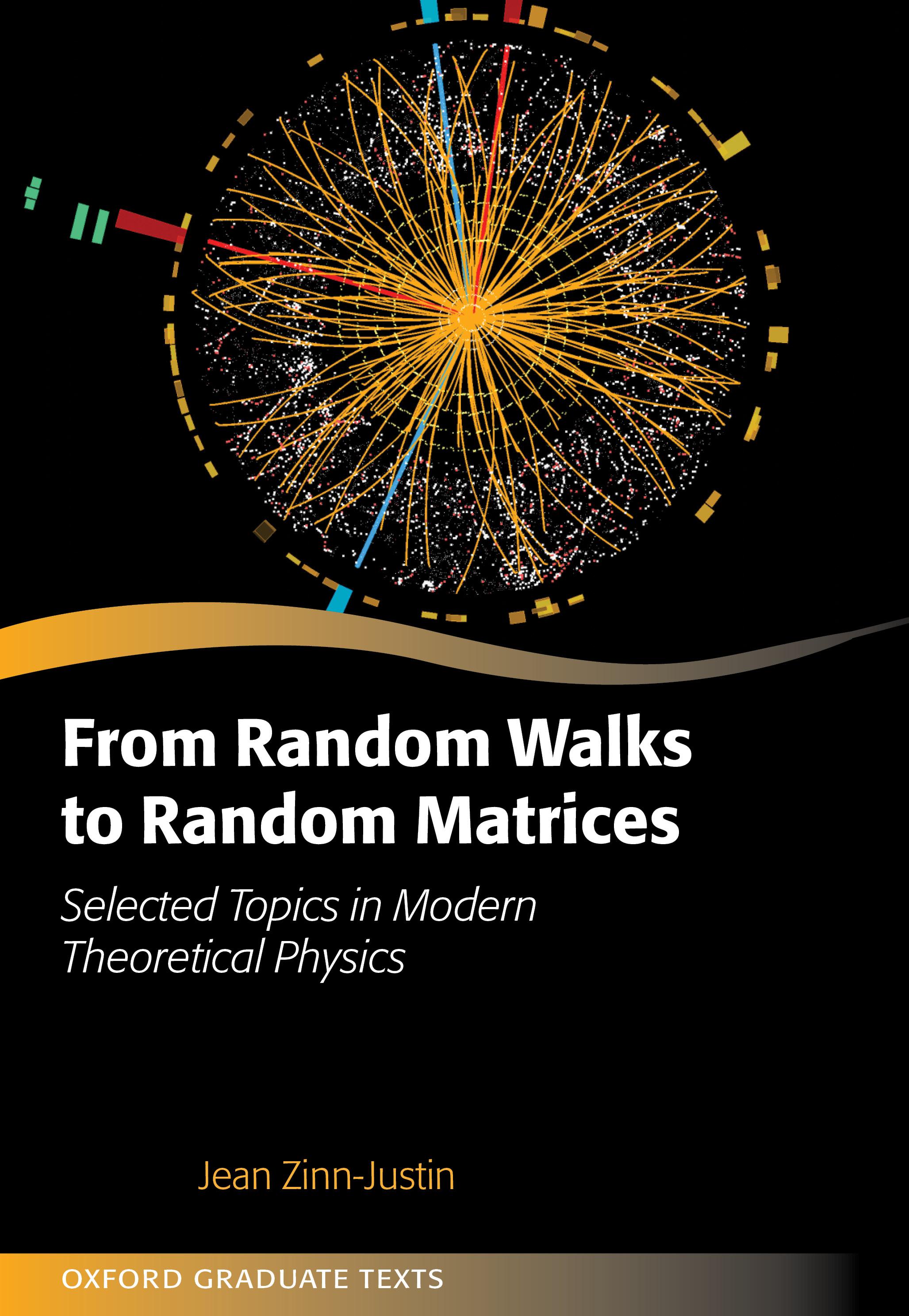Zinn-Justin Visit to download the full and correct content document: https://ebookmass.com/product/from-random-walks-to-random-matrices-selected-topi cs-in-modern-theoretical-physics-1st-edition-jean-zinn-justin/
More products digital (pdf, epub, mobi) instant download maybe you interests ...
Random in Death 1st Edition J. D. Robb https://ebookmass.com/product/random-in-death-1st-edition-j-drobb/
Quantum Field Theory and Critical Phenomena 5th Edition Jean Zinn-Justin
https://ebookmass.com/product/quantum-field-theory-and-criticalphenomena-5th-edition-jean-zinn-justin/
Stochastic processes and random matrices : lecture notes of the Les Houches Summer School First Edition. Edition Altland
https://ebookmass.com/product/stochastic-processes-and-randommatrices-lecture-notes-of-the-les-houches-summer-school-firstedition-edition-altland/
Schaum's Outline of Probability, Random Variables, and Random Processes, Fourth Edition Hwei P. Hsu
https://ebookmass.com/product/schaums-outline-of-probabilityrandom-variables-and-random-processes-fourth-edition-hwei-p-hsu/
Random Process Analysis With R Marco Bittelli https://ebookmass.com/product/random-process-analysis-with-rmarco-bittelli/
Spatiotemporal Random Fields, Second Edition: Theory and Applications George Christakos
https://ebookmass.com/product/spatiotemporal-random-fieldssecond-edition-theory-and-applications-george-christakos/
Advances in Semiconductor Technologies: Selected Topics Beyond Conventional CMOS An Chen https://ebookmass.com/product/advances-in-semiconductortechnologies-selected-topics-beyond-conventional-cmos-an-chen/
Special Functions of
Fractional Calculus: Applications to Diffusion and Random Search Processes Trifce Sandev
https://ebookmass.com/product/special-functions-of-fractionalcalculus-applications-to-diffusion-and-random-search-processestrifce-sandev/
Weather, macroweather, and the climate : our random yet predictable atmosphere Lovejoy
https://ebookmass.com/product/weather-macroweather-and-theclimate-our-random-yet-predictable-atmosphere-lovejoy/
FROMRANDOMWALKSTORANDOMMATRICES FROMRANDOMWALKSTORANDOMMATRICES SelectedTopicsinModernTheoreticalPhysics JeanZinn-Justin
IRFU/CEA,Paris-SaclayUniversity and FrenchAcademyofSciences
GreatClarendonStreet,Oxford,OX26DP, UnitedKingdom
OxfordUniversityPressisadepartmentoftheUniversityofOxford. ItfurtherstheUniversity’sobjectiveofexcellenceinresearch,scholarship, andeducationbypublishingworldwide.Oxfordisaregisteredtrademarkof OxfordUniversityPressintheUKandincertainothercountries
c JeanZinn-Justin2019
Themoralrightsoftheauthorhavebeenasserted FirstEditionpublishedin2019 Impression:1
Allrightsreserved.Nopartofthispublicationmaybereproduced,storedin aretrievalsystem,ortransmitted,inanyformorbyanymeans,withoutthe priorpermissioninwritingofOxfordUniversityPress,orasexpresslypermitted bylaw,bylicenceorundertermsagreedwiththeappropriatereprographics rightsorganization.Enquiriesconcerningreproductionoutsidethescopeofthe aboveshouldbesenttotheRightsDepartment,OxfordUniversityPress,atthe addressabove
Youmustnotcirculatethisworkinanyotherform andyoumustimposethissameconditiononanyacquirer
PublishedintheUnitedStatesofAmericabyOxfordUniversityPress 198MadisonAvenue,NewYork,NY10016,UnitedStatesofAmerica
BritishLibraryCataloguinginPublicationData Dataavailable
LibraryofCongressControlNumber:2019930266
ISBN978–0–19–878775–4 DOI:10.1093/oso/9780198787754.001.0001
Printedandboundby CPIGroup(UK)Ltd,Croydon,CR04YY
Preface Thisworkgathersaselectionofseminarsandmini-coursesdelivered duringthelast decadeinanumberofcountries.Inaddition,fourarticlesfromScholarpediahave beenincluded,innewlyeditedform.
Asaconsequence,thevariouschapterstrytobeasself-containedaspossible, eventhoughthetopicshavebeenselectedtoinvolvesomecommonthemes,which giveageneralconsistencytothewholework.
Thisimpliessomeredundancy,whichwehavetriedtominimize.
Themainthemesaretherenormalizationgroup(RG),fixedpoints,universality andthecontinuumlimit,whichopenandconcludethework.Otherimportant andrelatedthemesarepathandfieldintegrals,thenotionofeffectivequantum orstatisticalfieldtheories,gaugetheories,whichisthemathematicalstructureat thebasisoftheinteractionsinfundamentalparticlephysics,includingquantizationproblemsandanomalies,stochasticdynamicalequationsandsummationof perturbativeseries.
Onpurpose,inthechaptersderivedfromseminars,wehavetriedtokeepthe technicallevelaslowasreasonablypossible,consideringthetopics
Somebasichistoricalbackgroundconcerningtheconstructionof quantumfield theory(QFT),theconstructionoftheStandardModelofinteractionsatthemicroscopicscaleandtheemergenceofRGisprovided.
Chapter1discussestheasymptoticpropertiesatlargetimeandspaceofthe familiarexampleoftherandomwalk.Theemphasishereison universality,the continuumlimit, Gaussiandistributionandscaling.Thesepropertiesarefirstderivedfromanexactsolutionandthenrecoveredby RG methods.Thismakesthe introductionofthewholeRGterminologypossible.
Chapter2islargelydescriptiveandintroducesthenotionoffunctional(pathand field)integrals,forbosonaswellasfermionsystems(basedonthe formalismof Grassmannintegration),astheyareusedinphysics.
Chapter3illustrates,usinganumberofexamples,theessentialroleoffunctional integralsinphysics:thepathintegralrepresentationofquantum mechanicsexplains whymanybasicequationsofclassicalphysicssatisfyavariationalprinciple,the relationbetweenQFTandthetheoryofcriticalphenomenainmacroscopicphase transitionsandsoon.
Chapter4describesafewimportantstepswhichhaveledfromthediscoveryof infinitiesinquantumelectrodynamicstotheconceptofrenormalizationandRG. RGtodayplaysanessentialroleinourunderstandingofthepropertiesofQFTand ofcontinuousmacroscopicphasetransitions.
InChapter5,wefirstrecalltheimportanceoftheconceptofscaledecouplingin physics.WethenemphasizethatQFTandthetheoryofcriticalphenomenahave providedtwoexampleswherethisconceptfails.
Todealwithsuchasituation,newtoolshavebeeninventedbasedon theconcept ofRG.
Chapter6describeshowtheperturbativeRGofQFThasmadeitpossible toderiveuniversalpropertiesofcontinuousmacroscopicphasetransitionsandto calculateuniversalquantitiesusingdimensionalcontinuationandWilson–Fisher’s ε =4 d expansion.Seriessummationmethodsarethenrequiredtodetermine precisevaluesofcriticalexponents.
Chapter7isdevotedtoadiscussionoftheRGflowwhentheeffective φ4 fieldtheorythatdescribestheuniversalpropertiesofcriticalphenomenadependsonseveral couplingconstants.Someexamplesillustratethenotionof emergentsymmetry
Chapter8ismoretechnical:wetrytoexplainthenotionofeffectivefieldtheory, illustratingthetopicwithexamples,andstressthatallQFTsappliedtoparticleor statisticalphysicsareeffective(i.e., notfundamental)lowenergyorlargedistance theories.
ManyRGresultsarederivedwithintheframeworkoftheperturbativeRG.However,thisRGistheasymptoticforminsomeneighbourhoodofaGaussianfixed pointofthemoregeneralandexactRG,asintroducedbyWilsonand Wegner.In Chapter9,wedescribethecorrespondingRGequationsandgivesomeindications abouttheirderivation.
Inthecaseofthespontaneousbreakingofacontinuoussymmetry,thecorrelation lengthdivergesatalltemperaturesintheorderedphase.Physicalsystemsthen displayuniversalpropertiesforalltemperaturesbelow Tc.Thisphenomenonis aconsequenceoftheexistenceofGoldstonemodes(masslessbosons,intheQFT terminology).InChapter10,weconsidertheexampleofthe O(N )symmetryand showthatanRGcanbeconstructedanduniversalpropertiesderivedatandnear dimension2intheframeworkofan ε = d 2expansion.
Chapter11isthefirstoffourchaptersthatdiscussvariousissuesconnectedwith theStandardModeloffundamentalinteractionsatthemicroscopicscale.
InChapter11,wediscussthenotionofgaugeinvariance,firstAbelianandthen non-Abelian,thebasicgeometricstructurethatgeneratesinteractions.
InChapter12,wedescribethemainstepsintheconstructionoftheelectroweak componentoftheStandardModel.TherecentdiscoveryofthelastpredictedparticleoftheStandardModel,theHiggsparticle(whichwassearchedforanumberof years),hasbeenanadditionalandmajorconfirmationofthevalidityofthemodel.
Chapter13isdevotedtosomeaspectsofquantumchromodynamics(QCD),the partoftheStandardModelresponsibleforstronginteractions. Asanintroduction, thegeometryofnon-Abeliangaugetheories,basedonparalleltransport,isrecalled. Thisgeometricpointofviewleadsnaturallytotheconstructionoflatticegauge theories,whichcanbestudiedbynumericalsimulations.
Chapter14describestheimportantBRSTsymmetryofquantizedgaugetheories. Theexplicitrealizationofthesymmetryisnotstableunderrenormalization.By contrast,somequadraticequationssatisfiedbythegeneratingfunctionalofvertex functions(the1PI(one-particle-irreducible)correlationfunctions),theZinn-Justin equation,isstableandisatthebasisofageneralproofoftherenormalizabilityof non-Abeliangaugetheories.
Chapter15isdevotedtothefollowingquestion:eventhoughQFTsareonly effectivelowenergyorlargedistancetheories,underwhichconditionsisitpossible todefinerenormalizedQFTsconsistentonallscales?Onthebasisof examples, ithasbeensuggestedthatanecessaryand,perhaps,sufficientconditionisthe existenceofultravioletfixedpoints,apropertycalled‘asymptoticsafety’.
Chapter16dealswiththeimportantproblemofquantizationwithsymmetries, thatis,howtoimplementsymmetriesoftheclassicalactioninthecorresponding quantumtheory.Theproposedsolutionsarebasedonregularizationmethods. Obstructionsencounteredinthecaseofchiraltheoriesareemphasized.
InChapter17,weexhibitvariousexplicitexamples,whereclassicalsymmetries cannotbetransferredtoquantumtheories.Theobstructionsarecharacterized byanomalies.Theexamplesinvolvechiralsymmetriescombinedwithcurrentsor gaugesymmetries.Inparticular,anomaliesleadtoobstructionsintheconstruction oftheoriesandhave,therefore,constrainedthestructureof theStandardModel. Otherapplicationsarealsodescribed.
Chapter18dealswithafewexampleswheretheclassicalactionhasaninfinite numberofdegenerateminimabut,inquantumtheory,thisdegeneracyislifted bybarrierpenetrationeffects.Technically,thiscorrespondstotheexistenceof instantons,solutionstoclassicalequationsinimaginarytime.Inthe caseofQCD, thisleadstothefamousstrongCPviolationproblem.
ComputersimulationsofcriticalstatisticalsystemsorQFTmodelsareperformed withsystemswheresizesarefinite.Intransfermatrixcalculations,allsizesbutone arealsofinite.Insystemswherethecorrelationlengthislarge,itisthusimportant tounderstandhowtheinfinitesizelimitisreached.Thisproblemisinvestigatedin Chapter19.
AfterthediscoveryofthepredictedBose–Einsteincondensation,whichisapropertyoffreebosons,aninterestingissuewastheeffectsofweakrepulsiveinteractions. InChapter20,itisshownthattheBose–Einsteincondensationisthenreplacedby asuperfluidphasetransition.Thesetheoreticalconsiderationsareillustratedbyan evaluationofthevariationofthetransitiontemperatureatweakcoupling.
Chapter21isdevotedtoastudyofQFTatfinitetemperature,atopicthat isrelevanttoheavyionhighenergycollisions.Aninterestingissueconcernsthe conditionsfordimensionalreduction,thatis,whencantheinitialfieldtheorybe replacedbyaneffectivefieldtheorywithouttimedimension?
InChapter22,westudystochasticdynamicalequations,generalizedLangevin equations,whichdescribeawiderangeofphenomenafromBrownian motionto criticaldynamicsinphasetransitions.Inthelattercase,dynamicRGequations canbederived.Dynamicscalingfollows,withascalingtimethatexhibits critical slowingdown.
InQFT,allperturbativeexpansionsaredivergentseries,inthemathematical sense.Thisleadstoadifficultywhentheexpansionparameterisnotsmall.In thecaseofBorelsummableseries,anumberoftechniqueshavebeendeveloped toderiveconvergentsequencesfromdivergentseries.Thisisthe centraltopicof Chapter23.
InanumberofquantummechanicsandQFTexamplesexhibitingdegenerate classicalminimarelatedbyquantumtunnelling,theperturbativeexpansionisnot Borelsummableandtheperturbationseriesdonotdefineuniquefunctions.An importantissueisthenwhatkindofadditionalinformationisrequired todetermine theexactexpandedfunctions.
WhiletheQFTexamplesarecomplicatedandtheirstudyisstillatthepreliminarystage,inquantummechanics,inthecaseofsomeanalyticpotentialsthathave degenerateminima(likethequarticdouble-wellpotential),theproblemhasbeen completelysolved.SomeexamplesaredescribedinChapter24.
Whilethestudyofthestatisticalpropertiesofrandommatricesof largesize hasalonghistorygoingbacktoWigner,inthemid-1980sitwasrealized that someensemblesofrandommatricesinthelargesizeandso-calleddoublescaling limitcouldbeusedastoymodelsfortwo-dimensionalquantumgravity coupledto conformalmatterandstringtheory,orasexamplesofcriticalstatisticalmodelson sometypeofrandomsurfaces.
Atremendousdevelopmentofrandommatrixtheoryfollowed,using increasinglysophisticatedmathematicalmethods,andnumberofmatrixmodelshave beensolvedexactly.However,thesomewhatparadoxicalsituationisthateither themodelscanbesolvedexactlyorlittlecanbesaidaboutthem.Therefore,since thesolvedmodelsexhibitcriticalpointsanduniversalproperties,it istemptingto useRGideastodetermineuniversalproperties,withoutsolvingmodelsexplicitly.
Somenon-trivialprogresshasbeenachievedalongtheselines,whicharereported inChapter25,butnosystematicmethodhasbeendiscoveredtogo beyondthe simplestapproximationschemes.
ThissituationagainillustratesthefactthatRGisafundamentalidea butnot amethod.Inorderforittobeefficient,itisnecessarytofindaproperwayto implementit.
Acknowledgements. ManythankstoElisabethFarrellforhercarefulproofreading ofthemanuscript.
Saclay,18April2019
Contents 1Therandomwalk:Universalityandcontinuumlimit .........1
1.1Randomwalkinvariantunderspaceanddiscretetimetranslations ..1
1.2Fourierrepresentation......................2
1.3Randomwalk:Asymptoticbehaviourfromadirectcalculation.... 3
1.4Correctionstocontinuumlimit..................5
1.5Randomwalk:Fixedpointsoftransformationsanduniversality.. ..6
1.6Localandglobalstabilityoffixedpoints..............8
1.7Brownianmotionandpathintegral................11
2Functionalintegration:Frompathtofieldintegrals ..........13
2.1Randomwalk,Brownianmotionandpathintegral.........14
2.2TheWienermeasureandstatisticalphysics............18
2.3Generalization.........................19
2.4Gaussianpathintegrals:Thequantumharmonicoscillator...... 23
2.5Pathintegrals:Perturbationtheory................24
2.6Pathintegral:Quantumtimeevolution..............26
2.7Barrierpenetrationinthesemi-classicallimit............27
2.8Pathintegrals:Afewgeneralizations...............28
2.9Pathintegralsforbosonsandfermions...............30
2.10Fieldintegrals:Newissues....................32
3Theessentialroleoffunctionalintegralsinmodernphysics ......35
3.1Classicalphysics:Themysteryofthevariationalprinciple..... .35
3.2Quantumevolution:FromHamiltoniantoLagrangianformalism...38
3.3Fromquantumevolutiontostatisticalphysics...........41
3.4Statisticalmodelsatcriticalityandquantumfieldtheory....... 43
3.5Barrierpenetration,vacuuminstability:Instantoncalculus... ...44
3.6LargeorderbehaviourandBorelsummability:Criticalexponents...45
3.7Quantizationofgaugetheories..................47
3.8Numericalsimulationsinquantumfieldtheory...........50
3.9Quantizationofthenon-linear σ-model..............51
3.10 N -componentfields:Large N techniques..............52
4Frominfinitiesinquantumelectrodynamicstothegeneral renormalizationgroup .......................53
4.1QFT,RG:Somemajorsteps...................54
4.2QEDandtheproblemofinfinities.................55
4.3Therenormalizationstrategy...................58
4.4Thenatureofdivergencesandthemeaningofrenormalization.. ..59
4.5QFTandRG..........................60
4.6Criticalphenomena:Otherinfinities................61
4.7Thefailureofscaledecoupling:TheRGidea............62
4.8Phasetransitions:ExactRGinthecontinuum...........63
4.9Effectivefieldtheory:Fromcriticalphenomenatoparticlephysics...66
5RenormalizationGroup:Fromageneralconcepttonumbers .....69
5.1Scaledecouplinginphysics:Abasicparadigm...........70
5.2Fundamentalmicroscopicinteractions...............71
5.3Macroscopicphasetransitions..................72
5.4Fixedpoints:TheQFTframework................75
5.5RG,correlationfunctionsandscalingrelations...........77
5.6Exponents:PracticalQFTcalculations..............78
5.7Resultsforthree-dimensionalcriticalexponents.......... .79
6Criticalphenomena:Thefieldtheoryapproach ............81
6.1UniversalityandRG......................82
6.2RGinthecontinuum:Abstractformulation............84
6.3Effectivefieldtheory......................85
6.4TheGaussianfieldtheory....................87
6.5GaussianfixedpointandGaussianrenormalization.........89
6.6Statisticalscalarfieldtheory:Perturbationtheory........ .90
6.7Dimensionalcontinuationandregularization............91
6.8PerturbativeRG........................92
6.9RGequations:Solutions.....................96
6.10Wilson–Fisher’sfixedpoint: ε-Expansion.............97
6.11Criticalexponentsas ε-expansions................99
6.12Three-dimensionalexponents:Summationofthe ε-expansion....100
7Stabilityofrenormalizationgroupfixedpointsanddecay ofcorrelations ..........................101
7.1Modelswithonlyonecorrelationlength.............101
7.2Cubicanisotropy,amodelwithtwocouplings..........103
7.3GeneralquarticHamiltonian:RGfunctions...........106
7.4Runningcouplingconstantsandgradientflows..........107
7.5Fixedpointstabilityandvalueofthepotential..........108
7.6Fixedpointstabilityandfielddimension.............110
8Quantumfieldtheory:Aneffectivetheory .............111
8.1Effectivelocalfieldtheory:Thescalarfield............112
8.2PerturbativeassumptionandGaussianrenormalization......113
8.3Fundamentalinteractionsatthemicroscopicscale.........120
8.4Fieldtheorywithalargemass:Anexplicittoymodel.......121
8.5Aneffectivefieldtheory:TheGross–Neveumodel.........124
8.6Non-linear σ-model:Anothereffectivefieldtheory.........130
9Thenon-perturbativerenormalizationgroup ............137
9.1IntuitiveRGformulation....................137
9.2Non-perturbativeRGequations.................139
9.3Partialfieldintegration:Someidentities.............142
9.4Partialfieldintegrationindifferentialform............143
10O(N)vectormodelintheorderedphase:Goldstonemodes .....145
10.1Classicallatticespinmodelandregularizednon-linear σ-model...146
10.2Perturbativeorlowtemperatureexpansion............149
10.3ZeromomentumorIRdivergences...............153
10.4Formalcontinuumlimit:Thenon-linear σ-model.........154
10.5Thecontinuumtheory:Regularization..............157
10.6Symmetryandrenormalization.................158
10.7Correlationfunctionsindimension d =2+ ε atoneloop......162
10.8RGequations.........................165
10.9ZerosoftheRG β-function:Fixedpoints............166
10.10Correlationfunctions:Scalingformbelow Tc ...........168
10.11Linearformulation......................170
10.12Twodimensions.......................174
11Gaugeinvarianceandgaugefixing ................177
11.1Gaugeinvariance:Afewhistoricalremarks............177
11.2Variationalprinciple,chargedparticleandgaugeinvariance... .178
11.3Gaugeinvariance:Achargedquantumparticle..........181
11.4Evolutionofachargedparticle:Pathintegralrepresentation ....185
11.5ClassicalelectromagnetismandMaxwell’sequations........185
11.6Gaugefixinginclassicalgaugetheories.............187
11.7QED............................188
11.8Non-Abeliangaugetheories..................190
11.9Quantizationofnon-Abeliangaugetheories:Gaugefixing..... 193
11.10GeneralRelativity......................194
12TheHiggsboson:Amajordiscoveryandaproblem ........195
12.1Perturbativequantumfieldtheory:Theconstruction...... .195
12.2Spontaneoussymmetrybreaking................196
12.3Non-Abeliangaugetheories..................198
12.4TheclassicalAbelianLandau–Ginzburg–Higgsmechanism.....199
12.5Abelianandnon-AbelianHiggsmechanism............200
12.6Non-Abeliangaugetheories:Quantizationandrenormalization. ..201
12.7Theself-coupledHiggsfield:AsimpleRGanalysis........202
12.8TheGross–Neveu–Yukawamodel:AHiggs–toptoymodel.....204
12.9GNYmodel:ThegeneralRGflowatoneloop..........207
12.10Thefinetuningissue.....................208
13Quantumchromodynamics:Anon-Abeliangaugetheory ......209
13.1Geometryofgaugetheories:Paralleltransport.......... 210
13.2Gaugeinvariantaction.....................212
13.3Hamiltonianformalism.Quantizationinthetemporalgauge....214
13.4Perturbationtheory,regularization...............219
13.5QCD:Renormalizationgroup..................220
13.6Anomalies:Generalremarks..................221
13.7QCD:Thesemi-classicalvacuumandinstantons.........222
13.8Latticegaugetheories:Generalities...............225
13.9Purelatticegaugetheory...................226
13.10Wilsonloopandtheconfinementproperty............229
13.11Fermionsonthelattice.Chiralsymmetry............235
14FromBRSTsymmetrytotheZinn-Justinequation .........237
14.1Non-Abeliangaugetheories:Classicalfieldtheory.........238
14.2Non-Abeliangaugetheories:Thequantizedaction........239
14.3BRSTsymmetryofthequantizedaction.............241
14.4TheZJequationandremormalization..............244
14.5TheZJequation:Afewgeneralproperties............247
14.6BRSTsymmetry:Thealgebraicorigin..............250
15Quantumfieldtheory:Asymptoticsafety
15.2Super-renormalizableeffectivefieldtheories:The(φ2)2 example..255 15.3Arenormalizablefieldtheory:The(φ2)2 theoryindimension4...258
15.4Thenon-linear σ-model....................260
15.5TheGross–Neveumodel....................262
15.6QCD............................263
15.7Generalinteractionsandsummary...............264
16Symmetries:Fromclassicaltoquantumfieldtheories ........265
16.1Symmetriesandregularization.................265
16.2Higherderivativesandmomentumcut-offregularization...... 268
16.3Regulatorfields........................271
16.4Abeliangaugetheory,thetheoreticalframeworkofQED.... ..273
16.5Non-Abeliangaugetheories..................276
16.6Dimensionalregularizationandchiralsymmetry.........278
16.7Latticeregularization.....................280
17Quantumanomalies:Afewphysicsapplications ..........283
17.1ElectromagneticdecayoftheneutralpionandAbeliananomaly. .284
17.2Atwo-dimensionalillustration:TheSchwingermodel.......291
17.3Abelianaxialcurrentandnon-Abeliangaugefields........298
17.4Non-Abeliananomalyandchiralgaugetheories..........301
17.5Weakandelectromagneticinteractions:Anomalycancellation.. .303
17.6Wess–Zuminoconsistencyconditions..............305
17.7Latticefermions:Ginsparg–Wilsonrelation............307
17.8Supersymmetricquantummechanicsanddomainwallfermions.. .313
18Periodicsemi-classicalvacuum,instantonsandanomalies ......319
18.1Theperiodiccosinepotential..................319
18.2Instantons,anomaliesand θ-vacua: CP N 1 models........322
18.3Non-Abeliangaugetheories:Instantonsandanomalies...... .328
18.4Thesemi-classicalvacuumandthestrongCPviolation......332
18.5Fermionsinaninstantonbackground:The U (1)problem.....332
19Fieldtheoryinafinitegeometry:Finitesizescaling ........335
19.1Periodicboundaryconditionsandtheproblemofthezeromode. .335
19.2Cylindricalgeometry:Two-dimensionalfieldtheory........338
19.3Effective(φ2)2 fieldtheoryatcriticalityinfinitegeometries....343
19.4Momentumquantizationinfinitegeometries...........346
19.5The(φ2)2 fieldtheoryinaperiodichypercube..........347
19.6The(φ2)2 fieldtheory:Cylindricalgeometry...........353
19.7Continuoussymmetries:Finitesizeeffectsatlowtemperature. ..358
20TheweaklyinteractingBosegasatthecriticaltemperature .....361 20.1Bosegas:Fieldintegralformulation...............361
20.2Independentbosons:Bose–Einsteincondensation........ .363
20.3TheweaklyinteractingBosegasandtheHeliumphasetransition. .364
20.4RGanduniversality......................365
20.5Theshiftofthecriticaltemperatureforweakinteraction... ...368
21Quantumfieldtheoryatfinitetemperature ............373
21.1FinitetemperatureQFT:Generalconsiderations.........374
21.2Scalarfieldtheory:Effectivetheoryforthezeromode...... .376
21.3The(φ2)2 1,d scalarQFT:Phasetransitions............379
21.4Temperatureeffects:Thetemperature-dependentmass.. ....380
21.5Phasestructureatfinitetemperatureatoneloop......... 381
21.6RGatfinitetemperature....................384
21.7Effectiveaction:Perturbativecalculation............386
21.8Effectiveaction: ϕ-Expansion.................388
21.9The(φ2)2 fieldtheoryatfinitetemperatureinthelarge N limit..389
21.10Thenon-linear σ-modelatfinitetemperatureforlarge N .....392
21.11TheGNmodelatfinitetemperatureforlarge N .........399
21.12Abeliangaugetheories:TheQEDexample............408 A21Appendix:One-loopcontributions ................415 A21.1Γand ζ functions.......................415 A21.2Theone-looptwo-pointcontributionat T =0..........416 A21.3Thethermalcorrectionsatoneloop...............416
22Fromrandomwalktocriticaldynamics ..............421 22.1Randomwalkwithgradientdrivingforce............422
22.2Anelementaryexample:Thelineardrivingforce.........423
22.3TheFokker–Planckformalism.................427
22.4Pathintegralrepresentation..................432
22.5ThedissipativeLangevinequation:Supersymmetricformulation ..435
22.6Criticaldynamics:TheLangevinequationinfieldtheory.....439
22.7Time-dependentcorrelationfunctionsanddynamicaction.... .442
22.8ThedissipativeLangevinequationandsupersymmetry......444
22.9RenormalizationofthedissipativeLangevinequation.......446
22.10DissipativeLangevinequation:RGequationsin4 ε dimensions..446
23Fieldtheory:Perturbativeexpansionandsummationmethods ....451
23.1Divergentseriesinquantumfieldtheory.............451
23.2Anexample:Theperturbative(φ2)2 fieldtheory.........453
23.3Renormalizedperturbationtheory:Callan–Symanzikequations ...455
23.4Summationmethodsandcriticalexponents...........457
23.5ODMsummationmethod...................461
23.6Application:Thesimpleintegral d =0..............465
23.7Thequarticanharmonicoscillator: d =1.............468
23.8 φ4 fieldtheoryin d =3dimensions...............469
24Hyper-asymptoticexpansionsandinstantons ............471
24.1DivergentseriesandBorelsummability.............472
24.2Perturbativeexpansionandpathintegral............474
24.3Thequarticanharmonicoscillator:ABorelsummableexample... 475
24.4Thedouble-wellpotential:GeneralizedBohr–Sommerfeld quantizationformulae.....................478
24.5Instantonsandmulti-instantons.................484
24.6PerturbativeandexactWKBexpansions.............488
24.7Otheranalyticpotentials:Afewexamples............490
25Renormalizationgroupapproachtomatrixmodels .........493
25.1One-Hermitianmatrixmodelsandrandomsurfaces:Asummary. .494
25.2Continuumanddoublescalinglimits..............495
25.3TheRGapproach.......................496
1Therandomwalk:Universalityandcontinuumlimit The universalityofalargescalebehaviour and,correspondingly,theexistenceofa macroscopic continuumlimit,emergeascollectivepropertiesofsystemsinvolving a largenumberofrandomvariables whoseindividualdistributionissufficiently localized.
Theseproperties,aswellastheappearanceofanasymptotic Gaussiandistributionwhentherandomvariablesarestatisticallyindependent,areillustratedhere withthesimpleexampleofthe randomwalk withdiscretetimesteps.
Wefirstrecallhowtheasymptoticlargetime,largespacebehaviour canbederived andemphasizeits universalproperties
Wethentakea renormalizationgroup (RG)viewpoint.InspiredbyRGideas,we introducetransformations,actingonthetransitionprobability,whichdecreasethe numberoftimesteps[1].Weshowthat Gaussiandistributionsareattractivefixed points forthesetransformations. Thecontinuumasymptoticlimitwithuniversal scalingproperties isthenrecovered.
Thepropertiesofthe continuumlimit canthenbedescribedbya pathintegral.
1.1Randomwalkinvariantunderspaceanddiscretetimetranslations
Weconsiderastochasticprocess,arandomwalk,indiscretetimes, firstonthereal axisandthen,briefly,onthelatticeofpointswithintegercoordinates.
Therandomwalkisspecifiedby:
aninitialprobabilitydistribution P0(q) (q beingaposition)attime n =0, aprobabilitydensity ρ(q,q′) ≥ 0 forthetransitionfromthepoint q′ tothepoint q, whichweassume independentofthe(integer)time n. TheseconditionsdefineaMarkovchain,a Markovianprocess,inthesensethat thedisplacementattime n dependsonlyonthepositionattime n,butnotonthe positionsatpriortimes,homogeneousorstationary,thatis, invariantundertime translation,uptotheboundarycondition.
1.1.1Translationinvariantrandomwalkincontinuumspace
Probabilityconservationimplies
qρ(q,q ′)=1 . (1.1)
Theprobabilitydistribution Pn(q)forawalkertobeatpoint q attime n satisfies theevolutionequation Pn+1(q)= dq ′ ρ(q,q ′)Pn(q ′), dqP0(q)=1
Equation(1.1)thenimplies dqPn(q)=1.
Therandomwalk:Universalityandcontinuumlimit 1.2
Translationinvariance. Wehavealreadyassumed ρ independentof n and,thus, thetransitionprobabilityis invariantundertimetranslation.
Inaddition,wenowassumethatthetransitionprobabilityisalso invariantunder spacetranslations and,thus,
(q,q ′) ≡ ρ(q q ′)
Asaconsequence,theevolutionequationtakestheformofthe convolutionequation,
whichalsoappearsinthediscussionofthecentrallimittheoremofprobabilities.
Localrandomwalk. Weconsideronlytransitionfunctionspiecewisedifferentiable andwithboundedvariation.Wefurtherassumethatthetransition probability ρ(q) satisfiesaboundofexponentialform,
(q) ≤ M e A|q|,M,A> 0 ,
apropertyof exponentialdecay thatwecall locality.Qualitatively, largedisplacementshaveaverysmallprobability.
Generalizationto Rd Thegeneralizationtoatranslationinvariantwalkin Rd is simple.Inparticular,inthecaseofspacerotationsymmetry,themodificationof theevolutionequationisstraightforward.
1.2Fourierrepresentation TheevolutionequationsimplifiesafterFouriertransformation.Wethusintroduce
whichisalsoa generatingfunctionofthemomentsofthedistribution Pn(q).
Therealityof Pn(q)andthenormalizationofthetotalprobabilityimply
Similarly,weintroduce
∗ n (k)= Pn( k), Pn(k =0)=1
(k)= dq
ikq ρ(q), whichisalsoa generatingfunctionofthemomentsofthedistribution ρ(q): qr = dqρ(q)qr .
Finally,theexponentialdecayconditionimpliesthat thefunction ρ(k) isanalytic inthestrip | Im k| <A and,thus,hasaconvergentexpansionat k =0.
Theevolutionequationthenbecomes Pn+1(k)=˜ ρ(k)Pn(k).
Toslightlysimplifytheanalysis,wetakeasaninitialdistribution P0(q)= δ(q), where δ isDirac’sdistribution(thewalkeratinitialtimeisat q =0withprobability 1).Withthischoiceofinitialconditions, ˜ P0(k)=1and,thus, Pn(k)=˜ ρn(k).
1.3
Therandomwalk:Universalityandcontinuumlimit 3
1.2.1Generatingfunctionofcumulants
Weintroducethegeneratingfunctionofthecumulantsof ρ(q),
)=ln˜
Then,
Theregularityof˜ ρ(k)andthecondition˜ ρ(0)=1implythat w(k)hasaregular expansionat k =0oftheform
where wr isthe rthcumulant,forexample,
1.3Randomwalk:Asymptoticbehaviourfromadirectcalculation
Withthehypothesessatisfiedby P0 and ρ,thedeterminationoftheasymptotic behaviourfor n →∞ followsfromargumentsidenticaltothoseleadingto the centrallimittheoremofprobabilities
For n →∞ and w1 =0, w(k)isdominatedbythefirsttermand,thus,
Therandomvariable q/n convergeswithprobability1towardsitsexpectationvalue w1 (themeanvelocity).
For n →∞ and w1 =0, w(k)isdominatedbythetermoforder k2 and,thus,
Thenitistherandomvariable q/√n thathasasitslimitingdistribution,aGaussian distributionwithwidth √w2
Therandomvariablethatcharacterizesthedeviationwithrespect tothemean trajectory,
and,thus, X =0,has,aslimitingdistribution,the universalGaussiandistribution Ln(X)= √nPn(nw1 + X√n) ∼ 1 √2πw2 e X2/2w2 ,
whichdependsonlyontheparameter w2
Theneglectedtermsareoftwotypes,multiplicativecorrectionsof order1/√n andadditivecorrectionsdecreasingexponentiallywith n
Theresultimpliesthat themeandeviationfromthemeantrajectoryincreasesas thesquarerootoftime,acharacteristicpropertyof Brownianmotion.
Therandomwalk:Universalityandcontinuumlimit 1.3
1.3.1Continuumtimelimit
TheasymptoticGaussiandistributionofthedeviation¯ q = q nw1 fromthemean trajectoryis
Bychangingthetimescaleandbyacontinuousinterpolation,onecan definea diffusionprocessorBrownianmotionincontinuoustime.
Let t and ε betworealpositivenumbersand n theintegerpartof t/ε:
Onethentakesthelimit ε → 0at t fixedand,thus, n →∞
Ifthetime t ismeasuredwithafiniteprecision∆t,assoonas∆t ≫ ε,timecan beconsideredasacontinuousvariableforwhatconcernsallexpectationvaluesof continuousfunctionsoftime.
Onethenperformsthechangeofdistancescale
SincetheGaussianfunctioniscontinuous,thelimitingdistributiontakestheform
(Thechangeofvariables q → x inducesachangeofnormalizationofthedistribution.)
Inthelimit n →∞ andinsuitablemacroscopicvariables,oneobtainsadiffusion processthatcanentirelybedescribedin continuumtimeandspace.Thelimiting distributionisasolutionofthediffusionorheatequation,
ThedistributionΠ(t,x)impliesa scalingproperty characteristicoftheBrownian motion.Themomentsofthedistributionsatisfy
.6)
Thevariable x/√t hastime-independentmoments.
Dimensions. Asthechange¯ q = x/√ε alsoindicates, onecanthusassignto position x ascalingdimension 1/2intimeunits(thisalsocorrespondsto assigning aHausdorffdimension 2 toaBrowniantrajectory inhigherdimensions).
Therandomwalk:Universalityandcontinuumlimit 5
1.4Correctionstocontinuumlimit
WenowstudyhowdeviationsfromthelimitingGaussiandistributiondecaywhen ε → 0.
Weexpressthedistributionof¯ q = q nw1 intermsof w(k)=ln˜ ρ(k),
wherewehaveintroduced w(
)= w(k)+ ikw1 .
Withourassumptions,theexpansionoftheregularfunction¯ w(k)inpowersof k takestheform
Aftertheintroductionofmacroscopicvariables,whichfortheFouriervariables correspondto k = κ√ε,onefinds
Oneobservesthat,when ε = t/n goestozero,toeachadditionalpowerof κ there correspondsanadditionalpowerof √ε. Inthecontinuumlimit,thedistributionbecomes
t,x)= 1 2π
Differentiatingwithrespecttothetime t,oneobtains
andin w(κ), κ canthenbereplacedbythedifferentialoperator i∂/∂x. OnethusfindsthatΠ(t,x)satisfiesthelineargeneralized‘partialdifferential equation’
Intheexpansion,eachadditionalderivativeimpliesanadditionalfactor √ε and, thus,the contributionsthatcontainmorederivativesdecreasefastertozero.
1.5Randomwalk:Fixedpointsoftransformationsanduniversality
Wenowderivethe universalproperties oftheasymptoticrandomwalk,thatis, theexistenceofa limitingGaussiandistribution independentoftheinitialdistributionwithits scalingproperty,byaquitedifferentmethodthat doesnotinvolve calculatingtheasymptoticdistributionexplicitly. Forsimplicity,weassumethattheinitialnumberoftimestepsisofthe form n = 2m.Theideathenisto recursivelycombinethetimestepstwobytwo,decreasing thenumberofstepsbyafactor2ateachiteration.Wethenlookforthe fixedpoints ofsuchatransformation.
Thismethodprovidesasimple applicationofRGideastothederivationofuniversalproperties.
Italsoallowsustointroducesomebasic RGterminology.
1.5.1Timescaletransformationandrenormalization
Ateachiteration,onereplaces ρ(q q′)by
rescalingthetimescalebyafactor 2.
Thetransformationofthedistribution ρ(q)isnon-linearbut,appliedtothefunction w(k)=ln˜ ρ(k),itbecomesalineartransformation,since
Thistransformationhasanimportantproperty:itisindependentof m or n.Inthe languageofdynamicalsystems,itsrepeatedapplicationgeneratesa stationary,or invariantundertimetranslation,Markoviandynamics
Largetimebehaviourandfixedpoints. Thelargetimebehaviourisobtainedby iteratingthetransformation,studying T m for m →∞. Alimitingdistributionnecessarilyisafixedpointofthetransformation. Itcorrespondstoafunction w∗(k)(thenotation ∗ isnotrelatedtocomplex conjugation)thatsatisfies
Fortheclassoffastdecreasingdistributions,thefunction w∗(k)hasanexpansion inpowersof k oftheform(w∗(0)=0)
Withthisassumption,thefixedpointequation(1 7)hasonlythetrivialsolution w∗(k) ≡ 0.
1.5
Therandomwalk:Universalityandcontinuumlimit 7
Tothetimerescalingmustbeassociatedarescaling(a renormalization,inquantumfieldtheoryterminology)oftherandomspacevariable q.
Randomvariable:renormalization. Non-trivialfixedpointscanbereachedifthe transformationiscombinedwitha renormalizationofthedistancescale, q → zq, with z> 0.Wethusconsiderthetransformation
[Tz w](k) ≡ 2w(k/z) .
Thetransformation Tz providesasimpleexampleofan RGtransformation,aconceptthatwedescribethoroughlyintheframeworkofphasetransitions.
Thefixedpointequationthenbecomes
[Tzw∗](k) ≡ 2w∗(k/z)= w∗(k),
whichdeterminesthepossiblevaluesof z andthecorrespondingfunctions w∗(k).
Dimensionoftherandomvariable. Comparingtherescalingoftimeandthe randomvariable q,onecanattachto q ascalingdimension dq,intimeunits,defined by dq =ln z/ ln2 (1 9)
1.5.2Fixedpoints:genericsituation: w1 =0
Intheexpansion(1 8)ofthefunction w∗(k),inthegenericsituation,thefirstterm w1 doesnotvanish.ExpandingtheRGequation,atorder k,onefinds
2w1/z = w1 and w1 =0 ⇒ z =2
Then,identifyingthetermsofhigherdegree,oneconcludes
21 ℓ wℓ = wℓ ⇒ wℓ =0for ℓ> 1
Therefore,afixedpointsolutionis w∗(k)= iw1k.
Thefixedpointsformaone-parameterfamily,buttheparameter w1 canalsobe absorbedintoanormalizationoftherandomvariable q
Since ρ∗(q)= 1 2π dk eikq iw1 k = δ(q w1),
fixedpointscorrespondtothecertaindistribution q = q = w1
Since spaceandtimearerescaledbythesamefactor2, q hasascalingdimension dq =ln z/ ln2=1intimeunits.
Consistently,thefixedpointcorrespondsto q(t)= w1t,the equationofthemean path.
1.5.3Centreddistribution
Foracentreddistribution, w1 =0andonehastoexpandtoorder k2.Onefinds theequation w2 =2w2/z2 .
Sincethevariance w2 isstrictlypositive,exceptforacertaindistribution,acase thatwenowexclude,theequationimplies z = √2. Again,thecoefficients wℓ vanishfor ℓ> 2andthefixedpointshavetheform
Therefore,onefindstheGaussiandistribution
Thedimension dq =ln z/ ln2= 1 2 isconsistentwiththescalingproperty x ∝ √t of Brownianmotion
Thetwoessentialasymptoticpropertiesoftherandomwalk, convergencetowards aGaussiandistribution,andscalingproperty,arethusreproducedbythisRG-type analysis.
1.6Localandglobalstabilityoffixedpoints
Foranon-linearRGtransformation,aglobalstabilityanalysisis,ingeneral,impossible.Onecanonlystudythelocalstabilityoffixedpoints.Here, sincethe transformationislinear,localandglobalstabilitiesareequivalent.
1.6.1GeneralanalysisandRGterminology
Setting w(k)= w∗(k)+ δw(k), onefinds, [Tz δw](k) ≡ 2δw(k/z)
Onethenlooksforthe eigenvectorsandeigenvalues ofthetransformation Tz:
[Tzδw](k)= τδw(k).
Totheeigenvalue τ,oneassociatesthe exponent
α =ln τ/ ln2 .
Theperturbation δw hasanexpansioninpowersof k oftheform,
δw(k)= ℓ=1 ( i)ℓ ℓ! δwℓkℓ .
1.6
Then,
Therandomwalk:Universalityandcontinuumlimit 9
[Tzδw](k)=2δw(k/z)=2 ℓ=1 ( ik)ℓ ℓ! z ℓδwℓ
Theexpressionshowsthatthefunctions kℓ with ℓ> 0arethe eigenvectors ofthe transformation Tz andthecorrespondingeigenvaluesare
τℓ =2z ℓ ⇒ αℓ =ln τℓ/ ln2=1 ℓ ln z/ ln2 .
For n =2m timesteps,after m iterations,thecomponent δwℓ ismultipliedby nαℓ since
Thebehaviour,for n →∞,ofthecomponentof δwℓ ontheeigenvector kℓ thus dependsonthesignoftheexponent αℓ forthevariousvaluesof ℓ
Definitions
α> 0:Theperturbationscorrespondtounstabledirections;acomponentonthe correspondingeigenvectordivergesfor m →∞.InRGterminology,aperturbation correspondingtoapositiveexponent α andwhichthusleadsawayfromthefixed point,iscalled relevant.
α =0:Suchperturbationsarecalled marginal.InthegeneralRGframework,a stabilitystudyrequiresgoingbeyondthelinearapproximation.
α< 0:Theperturbationscorrespondtostabledirectionsandarecalled irrelevant.
Thenotionofuniversality.Universality,intheRGformulation,isaconsequence ofthepropertythatalleigenvectors,butafinitenumber,areirrelevant.
Lineoffixedpoints. Quitegenerally,the existenceofaone-parameterfamilyof fixedpointsimplies theexistenceofaneigenvalue τ =1and,thus, anexponent α =0.Indeed,letusassumetheexistenceofaone-parameterfamily offixedpoints w∗(s),
w∗(s)= w∗(s) , where w∗(s)isadifferentiablefunctionoftheparameter s.Then,
1.6.2Fixedpointstability: w1 =0
Havingintroducedsomeelementsof RGterminology,wenowdiscusseigenvectors andeigenvaluesorcorrespondingexponents.
(i) ℓ =1 ⇒ τ1 =1, α1 =0.Ifoneaddsaterm δw proportionaltotheeigenvector k to w∗(k), δw(k)= iδw1k,then w1 → w1 + δw1 , whichcorrespondstoanewfixedpoint.Thischangecanalsobeinterpretedasa lineartransformationon k orontherandomvariable q
Sincetheexponent α1 vanishes,thecorrespondingeigen-perturbationis marginal
(ii) ℓ> 1 ⇒ τℓ =21 ℓ < 1, αℓ < 0.Theeigen-pertubationsare irrelevant since theycorrespondto negativeexponents.Thecomponentsof δw onsucheigenvectors convergetozerofor n or m →∞.
1.6.3Fixedpointstability: w1 =0
Wenowstudythestabilityofthefixedpointcorrespondingtothetransformation T√2.Onesets
(k)= w∗(k)+ δw(k),
andlooksfortheeigenvectorsandeigenvaluesofthetransformation
Theeigenvaluesare
Thecorrespondingexponentsare
Thevaluescanbeclassifiedas:
(i) ℓ =1 ⇒ τ1 = √2, α1 = 1 2 .Thiscorrespondstoanunstabledirection;a componentonsuchaeigenvectordivergesfor m →∞
IntheRGterminology,theperturbation,whichcorrespondstoapositiveexponent α andwhichthusleadsawayfromthefixedpoint,iscalled relevant
Here,aperturbationlinearin k violatesthecondition w1 =0.Oneisthen broughtbacktothestudyofthemorestablefixedpointswith w1 =0.
(ii) ℓ =2 ⇒ τ2 =1,α2 =0.Avanishingeigenvaluecharacterizesa marginal perturbation.Here,theperturbationonlymodifiesthevalueof w2 and,again,can beinterpretedasalineartransformationontherandomvariable.
(iii) ℓ> 2 ⇒ τℓ =21 ℓ/2 < 1 ,αℓ =1 ℓ/2 < 0.Finally,allperturbations ℓ> 2correspondtostabledirectionsinthesensethattheiramplitudes convergeto zerofor m →∞ andare irrelevant.
Redundantperturbations. Intheexamplesexaminedhere,themarginalperturbationscorrespondtosimplechangesinthenormalizationoftherandomvariables. Inmanyproblems,thisnormalizationplaysnorole.Onecanthenconsiderthat fixedpointscorrespondingtodifferentnormalizationsshouldnotbedistinguished. Fromthisviewpoint,inbothcasesonehasfoundreallyonlyonefixedpoint. Theperturbationcorrespondingtothevanishingeigenvalueisthen nolongercalled marginalbut redundant,inthesensethatitchangesonlyanarbitrarynormalization.
Otheruniversalityclasses. Othervaluesof z =21/µ,correspondformallytonew fixedpointsoftheform |k|µ,0 <µ< 2(µ> 2isexcludedbecausethecoefficient of k2 isstrictlypositive).
However,thesefixedpointsare nolongerregularfunctions of k.Theycorrespond todistributionsthathavenosecondmoment q2 andthusnovariance:theydecay onlyalgebraicallyforlargevaluesof q.IntheRGterminology,theycorrespondto different universalityclasses,distributionswithotherdecayproperties.
1.7 Therandomwalk:Universalityandcontinuumlimit 11
1.6.4Randomwalkonalatticeofpointswithintegercoordinates
Theanalysiscanbegeneralizedtoarandomwalkonthepointsofintegercoordinateslike Zd (thesimplestexamplebeingmotiononthelinebyonelatticespacing leftorrightwithprobability1/2).Then, w(k)isaperiodicfunctionofperiod2π foreachspacedirection.
However,ateachRGtransformation,theperiodismultipliedbyafactor z> 1. Thus,asymptotically,theperioddivergesand,atleastforcontinuousobservables, thediscretecharacteroftheinitiallatticedisappears.
Inthe d-dimensionallattice Zd,iftherandomwalkhas hypercubicsymmetry, ki →−ki ,ki
kj ,i,j =1,...,d, theleadingtermintheexpansionof w(k)for k smallis 1 2 w2k2,becauseitisthe onlyquadratichypercubicinvariant.Therefore,asymptotically,therandomwalkis Brownianmotionwithspacerotationsymmetry
Thelatticestructureisonlyapparentinthefirstirrelevantperturbationbecause thereexiststwoindependentcubicinvariantmonomialsofdegree4:
1.7Brownianmotionandpathintegral Aniterationoftheevolutionequationofthetranslationinvariantrandomwalk
inthecaseofacertaininitialposition q = q0 =0,yields
Ifoneisinterestedonlyintheasymptoticpropertiesofthe distribution,which havebeenshowntobeindependentoftheinitialtransitionprobability,onecan derivethem,inthecontinuumlimit,startingdirectlyfrom Gaussiantransition probabilities oftheform
Theiteratedevolutionequationbecomes
with qn = q and
Therandomwalk:Universalityandcontinuumlimit 1.7
Wethenintroducemacroscopictimeandspacevariables(seeSection2.1),
τℓ = ℓε,τn = nε = t,xk = √εqk , with0 ≤ k ≤ n, andacontinuous,piecewiselinearpath x(τ)(Fig.1.1), x(τ)= √
Therelativepowersof ε betweenspaceandtimeagainreflectthescalingproperties oftherandomwalk.
Fig.1.1 A piecewiselinearpath contributingtothe time-discretized pathintegral.
Oneverifiesthat S canbewrittenas(withthenotation˙x(τ ) ≡ dx/dτ)
S x(τ) = 1 2w2 t 0 x(τ) 2dτ withtheboundaryconditions
x(0)=0 ,x(t)= √εq = x .
Moreover, Pn(q)= 1 (2πw2)1
Inthecontinuumlimit ε → 0, n →∞ with t fixed,theexpressionbecomesa representationofthedistributionofthecontinuumlimit,
Π(t,x) ∼ ε 1/2Pn(q), intheformofa pathintegral,whichwedenotesymbolicallyas
Π(t,x)= [dx(τ)] e−S(x(τ )) , where [dx(τ)]meanssumoverallcontinuouspathsthatstartfromtheoriginat time τ =0andreach x attime t.Thetrajectoriesthatcontributetothepath integralcorrespondto Brownianmotion,arandomwalkin continuumtimeand space.TherepresentationofBrownianmotionbypathintegrals,initiallyintroduced byWiener,isalsocalleda Wienerintegral [2](seeSection2.1).
2Functionalintegration:Frompathtofieldintegrals Priortothesecondhalfofthetwentiethcentury,thetechnicaltoolsoftheoretical physicsweremainlydifferentialorpartialdifferentialequations.However,inthe twentiethcentury,systematicinvestigationsof largescalesystemswithquantumor statisticalfluctuations werestarted.Newtoolswerethenrequired.Amongthem, amajortoolhasbeen functionalintegration.
Inthisintroductorychapter,whichisaneditedversionofRef.[3],wedescribe variousformsoffunctionalintegralsastheyareusedindifferentbranchesoftheoreticalphysics.Arigorousstudyofthemathematicalpropertiesoffunctionalintegrals isstillanopensubtopicoffunctionalanalysisandwillnotbeconsideredhere.
Pathintegralsinvolveweightedsummationoverallpathssatisfyingsomeboundaryconditionsandcanbeunderstoodasextensionstoaninfinitenumberofintegrationvariablesofusualmultidimensionalintegrals.
Pathintegralsarepowerfultoolsforthestudyof quantummechanics.Indeed, inquantummechanics,physicalquantitiescanbeexpressedasaveragesoverall possiblepathsweightedbytheexponentialofatermproportional totheratioof theclassicalaction S associatedtoeachpath,dividedbythePlanck’sconstant [4].Thus,pathintegralsemphasizeveryexplicitlythecorrespondencebetween classicalandquantummechanicsandgiveanexplicitmeaningtothenotionof quantumfluctuations.Inparticular,inthesemi-classicallimit S/ →∞,the leadingcontributionstotheintegralcomefrompathsclosetoclassicalpaths,which arestationarypointsoftheaction:pathintegralsleadtoanintuitiveunderstanding andsimplecalculationsofphysicalquantitiesinthesemi-classicallimit.
Theformulationofquantummechanicsbasedonpathintegralsiswell adapted tosystemswithmanydegreesoffreedom,whereaformalismofSchr¨odingertypeis muchlessuseful.Therefore,itallowsaneasytransitionfromquantummechanicsto quantumfieldtheoryorstatisticalphysics.Inparticular,generalizedpathintegrals (knownasfieldintegrals)leadtoanunderstandingofthedeeprelationsbetween quantumfieldtheoryandthetheoryofcriticalphenomenaincontinuousphase transitions.
Wefirstdescribepathintegralsencounteredinthestudyof Brownianmotion [2] andofquantumstatisticalmechanics[5](also Euclideantimei.e., imaginarytime quantummechanics).Thismeansthatweconsiderthepathintegralrepresentation ofthematrixelementsofthequantumstatisticaloperator,ordensitymatrixat thermalequilibrium e βH , ˆ H beingthequantumHamiltonianand β theinverse temperature(measuredinaunitwheretheBoltzmannconstant kB is1).
Thisremarkablerepresentationofquantumstatisticalsystemsalsomakesitpossible,perhapsmoresurprisingly,toshowarelationshipbetweenclassicalandquantumstatisticalmechanics.Indeed,forawholeclassofquantumHamiltonians,the integrandintheEuclideantimepathintegraldefinesapositivemeasure. FromRandomWalkstoRandomMatrices.JeanZinn-Justin,OxfordUniversityPress(2019). c JeanZinn-Justin.DOI:10.1093/oso/9780198787754.001.0001
Wethendefinethe realtime (inrelativisticfieldtheoryMinkowskiantime)path integral[4],whichdescribesthetimeevolutionofquantumsystemsandcorresponds, fortime-translationinvariantsystems,totheevolutionoperator e it ˆ H/ (t being therealtime).
Finally,welistafewgeneralizations:pathintegralsintheHamiltonianformulation,pathintegralsintheholomorphicrepresentationrelevantforbosonsystems and,correspondingly,Grassmannpathintegralsforfermions[6].
Mostoftheapplicationsofthepathintegralideatophysicsinvolve, infact,integralsoverfields(seeChapter3).Inparticular,fieldintegralsareindispensablefor theconstructionofquantizedgaugeinvarianttheories(seeChapter13),whichare atthebasisoftheStandardModeloffundamentalinteractionsatthemicroscopic scale,aswellasfordescribing universalproperties ofphasetransitions(Chapter6). Theseapplicationsrelyonapragmaticapproach,focusingmoreondeveloping calculationtools(includinglargescalenumericalsimulations)thanonestablishing rigorousproperties.Indeed,eventhoughanumberofinterestingrigorousresults havebeenproved,theconstructionofsomerealisticquantumfield theories,like gaugetheoriesinfourspace-timedimensions,remainsaformidablemathematical challenge.
Pathintegrals:Theorigins. Thefirst pathintegral seemstohavebeendefined by Wiener [2],asatooltodescribethestatisticalpropertiesof Brownianmotion, inspiredbythefamousworkofEinstein.IfWiener’sworkisratherwellknown,a less-knownarticleof Wentzel [7]ofaboutthesameperiodintroduces,intheframeworkof quantumoptics,thenotionsof sumsoverpathsweightedbyaphasefactor, ofdestructiveinterferencebetweenpathsthatdonotsatisfyclassicalequationsof motion,andthe interpretationofthesumasatransitionprobabilityamplitude.
Later, Dirac [8]calculatedthematrixelementsofthequantumevolutionoperatorforinfinitesimaltimeintervals.Thegeneralizationoftheresult tofinitetime intervalswouldhaveledtoapathintegral.
Inphysics,themodernhistoryofpathintegralsreallybeginswiththearticles of Feynman [4],whoformulated quantumevolutionintermsofsumsoverasetof trajectoriesweightedby eiA/ ,where A isthevalueofthecorrespondingclassical action(timeintegraloftheLagrangian)and isPlanck’sconstant.
2.1Randomwalk,Brownianmotionandpathintegral Asafirstexample,weconsiderarandomwalkonthereallinewithdiscretetimes n =0, 1, 2, (seeChapter1).Suchastochasticprocessisspecifiedbyaprobability distribution P0(q)fortheposition q atinitialtime n =0andadensity ρ describing theprobabilityoftransitionfromthepoint q′ tothepoint q.Weassumethat ρ is timeindependent,translationinvariantandsymmetric: ρ(q q′)= ρ(q′ q).
Theprobabilitydistribution Pn(q)attime n satisfiestherecursionrelationor masterequation
2.1 Functionalintegration:Frompathtofieldintegrals 15
Underrathergeneralconditions(seeChapter1),themostimportantbeingthat ρ(q)decreasesfastenoughfor |q| large(wecallthisa localMarkovprocess),one canprove(aconsequenceofthecentrallimittheoremofprobabilities)thatthe distribution Pn(q)convergesasymptoticallyforlargetimeandspacetowardsa Gaussiandistributionthat depends onlyonthesecondmomentofthetransition probability.
Therefore,ifoneisinterestedonlyinlargetimeanddistancepropertiesofthe randomwalk,onecanstartdirectlyfroman effective Gaussiantransitionprobability oftheform
where ξ> 0characterizesthewidthofthedistribution.
2.1.1Continuumlimitandpathintegral
IntheexampleofaGaussiantransitionprobability,itiseasytocalculate Pn(q) explicitlybysuccessiveGaussianintegrations.However,forourpurpose,itismore instructivetoimplementdirectlytherecursionrelation(2.1).Ifoneassumes,for example,thattheinitialdistributionisconcentratedatthepoint q = q0 (i.e., P0(q)= δ(q q0),where δ(q)isDirac’sgeneralizedfunction(adistribution)also knownas Diracfunction or δ-function),oneobtainsattime n theprobabilitydistribution
IntheGaussianexample(2.2),theexpressiontakestheform
where,defining q ≡ (q0,q1,...,qn)and q ≡ qn, S(q)= 1 2 n k=1 (qk qk 1)2 .
Wenowintroduceatimestep ε> 0,themacroscopictimeandspacevariables
k = t′ + kε,xk = √εqk , with0 ≤ k ≤ n, (suchthat τ0 = t′ , τn = t′ + nε ≡ t′′)andacontinuous,piecewiselinearpath(see Fig.1.1)
x(τ)= √ε qk 1 + τ τk 1 τk τk 1 (qk qk 1) for τk 1 ≤ τ ≤ τk and k ≥ 1 , (2.5)
withtheboundaryconditions x(t′)= √εq0 ≡ x ′ ,x(t′′)= √
